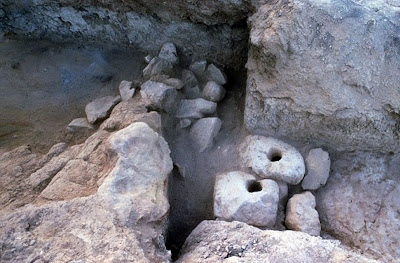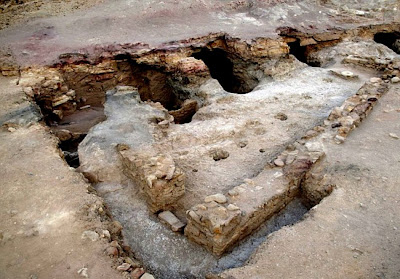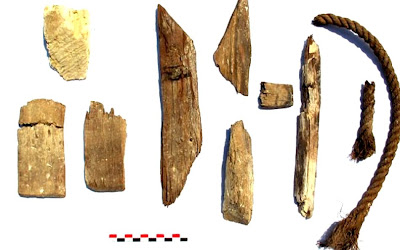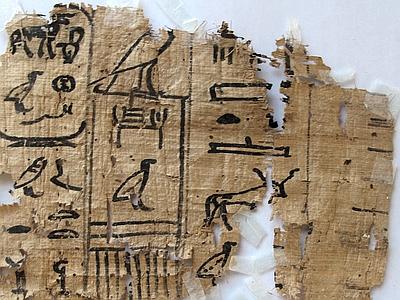La notizia è di ADNKronos ed è di quelle che danno un certo brivido. Mi era sfuggita per via di una breve vacanza, dalla quale sono - purtroppo - ritornato troppo presto.
Fino a quando i soliti burloni (nostrani e stranieri) non provvederanno a 'scoprirne' uno più antico, tutto nostro e magari (perché no?) pieno di orgogliose valenze identitarie, sembra che - per il momento, almeno - questo del Mar Rosso ne abbia proprio tutte le caratteristiche.
Lascio ad ognuno l'iniziativa di elaborare il significato che la scoperta riveste circa la sede della nascita e lo sviluppo posteriore della navigazione commerciale intensiva, con tutto ciò che concerne le scienze marinare e le tecnologie ad esse correlate...
Cairo, 11 April (AKI) –
A team of archaeologists in
Egypt has unearthed what is believed to be the world's most ancient harbour and
precious hieroglyphic papyri dating to the third millennium BC, the government
said on Thursday.
"The port of Wadi el-Jarf
located on the Red Sea. 180 kilometres south of Suez dates to around 2,600 BC
and the reign of King Khufu," Egypt's minister for antiquities Mohammed
Ibrahim said in a statement.
It is considered one of the
most important ancient Egyptian ports because it was used to transport copper
and other minerals from the Sinai peninsula, Ibrahim noted.
"The papyri, which
provide detailed accounts of daily life and traditions at the time of the Old
Kindgom, are considered the oldest ever found," Ibrahim stated.
The papyri are currently being
studied by experts at the Suez Museum, he said.
"The team of French and
Egyptian archaeologists working on the dig also discovered stone anchors at
Wadi el-Jarf that were marked with ropes used to tie the ships inside the
port," he said.
A collection of stone tools
used for cutting ropes and some wooden remains and ropes were also discovered
at the site as well as the remains of houses for ancient port workers and 30
caves whose entrances were closed with stone blocks bearing inscriptions of
King Khufu.
The pharoah King Khufu is credited with building the Great Pyramid of Giza
in Middle Egypt, one of the Seven Wonders of the Ancient World.
TRADUZIONE (PARZIALE) DELLA NOTIZIA D'AGENZIA DA PARTE DEL SITO "ARCHEOGATE".
Scoperto sul Mar Rosso il più
antico porto del mondo
Redazione Archaeogate, 17-04-2013
Un
team franco-egiziano ha scoperto un antico porto egiziano a Wadi el-Jarf, 180
km a sud di Suez. Lo scalo risale a 4.500 anni fa, all'epoca del faraone della
quarta dinastia che costruì la grande piramide di Giza. Gli scavi hanno portato
in luce quello che il più vecchio papiro (foto) mai rinvenuto a oggi in Egitto
Il papiro, datato al 27mo anno del regno di Cheope (2595 a.C. - 2570 a.C.), contiene informazioni sul numero dei lavoratori impegnati nello scalo e preziose informazioni sulla vita quotidiana. Secondo le prime ipotesi degli archeologi il porto sarebbe servito come punto di approdo per trasferire il rame dal Sinai, alle valle del Nilo.
Il papiro, datato al 27mo anno del regno di Cheope (2595 a.C. - 2570 a.C.), contiene informazioni sul numero dei lavoratori impegnati nello scalo e preziose informazioni sulla vita quotidiana. Secondo le prime ipotesi degli archeologi il porto sarebbe servito come punto di approdo per trasferire il rame dal Sinai, alle valle del Nilo.
More:
Archaeologists have stumbled upon what is thought to be the world's oldest port. The harbour, discovered on the Red Sea coast, is believed to date back 4,500 years, to the days of the Pharaoh Khufu (Cheops) in the Fourth Dynasty.
Teams believe it was once of one of the most important commercial ports of ancient Egypt, and would have been used for the export copper and other minerals from the Sinai Peninsula.
Alongside it were pieces of ancient papyri, which include fascinating details about the daily lives of ancient Egyptians.
Egyptian authorities said the archaeologists found a variety of docks, as well as a collection of carved stone anchors, NBC reports.
The harbour, which was built on the Red Sea shore in the Wadi al-Jarf area, 112 miles south of Suez, was discovered by a team from the French Institute for Archaeological Studies.
It is thought to be 1,000 years older than any other port structure in the world.
The team also discovered a collection of 40 papyri offering a fascinating insight into the daily lives of ancient Egyptians during the 27th year of Pharoah Khufu's reign. Khufu died around 2566 B.C.
It includes details of the arrangements for getting bread and beer to the workers heading out from the port.
Egypt's antiquities minister, Mohamed Ibrahim, said they were are the oldest papyri ever found in Egypt.
He said one ancient papyrus tells of the activities of an official named Merrer, who was involved in building the Great Pyramid of Giza, the tomb of Khufu.
'He mainly reported about his many trips to the Turah limestone quarry to fetch block for the building of the pyramid.
'Although we will not learn anything new about the construction of the Cheops monument, this diary provides for the first time an insight on this matter.'
Author: Amanda Williams | Source: Mail Online [April 16, 2013]
 |
| Part of the port at Wadi el-Jarf. Egyptian authorities said the archaeologists found a variety of docks, as well as a collection of carved stone anchors [Credit: British Museum] |
Alongside it were pieces of ancient papyri, which include fascinating details about the daily lives of ancient Egyptians.
 |
| Egyptian authorities said the archaeologists found a variety of docks, as well as a collection of carved stone anchors [Credit: British Museum] |
The harbour, which was built on the Red Sea shore in the Wadi al-Jarf area, 112 miles south of Suez, was discovered by a team from the French Institute for Archaeological Studies.
 |
| The harbour is thought to be 1,000 years older than any other port structure in the world [Credit: British Museum] |
It is thought to be 1,000 years older than any other port structure in the world.
The team also discovered a collection of 40 papyri offering a fascinating insight into the daily lives of ancient Egyptians during the 27th year of Pharoah Khufu's reign. Khufu died around 2566 B.C.
It includes details of the arrangements for getting bread and beer to the workers heading out from the port.
 |
| Pieces of worked wood, oar, tenons, pieces of wooden boxes, ropes found at Wadi el-Jarf [Credit: British Museum] |
He said one ancient papyrus tells of the activities of an official named Merrer, who was involved in building the Great Pyramid of Giza, the tomb of Khufu.
 |
| Hieroglyphic papyrus detailing the arrangements for getting bread and beer to the workers heading out from the port [Credit: EPA] |
'Although we will not learn anything new about the construction of the Cheops monument, this diary provides for the first time an insight on this matter.'
Author: Amanda Williams | Source: Mail Online [April 16, 2013]
